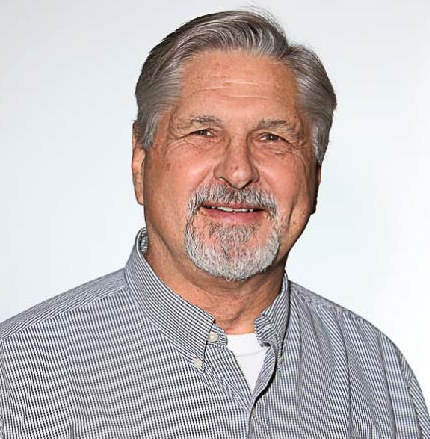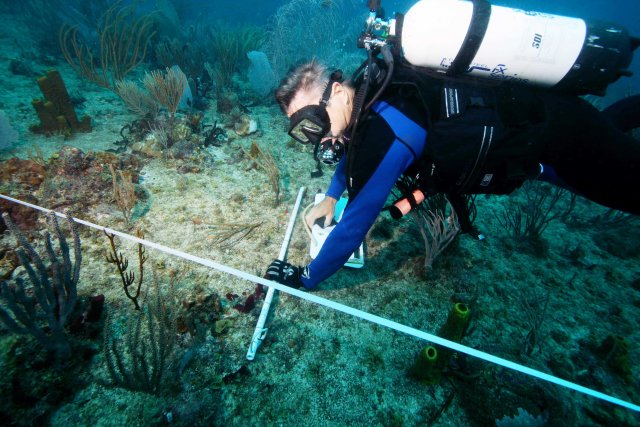Meet EPA Marine Scientist Bill Fisher, Ph.D.

What do you like most about your research?
It helps that what I learn, whether related to oyster diseases or coral reef condition, is important to the economy and well-being of the nation and the world. But day-to-day satisfaction comes from putting pieces of the puzzle together. Looking at data and information that will spark a hypothesis to fill a gap in our knowledge or to explain an apparent anomaly. I think it’s the challenge of puzzling things out.
How does your science matter?
Our research on corals is intended to help us measure reef condition and set thresholds and management goals. Over the years, we have evaluated different reef assessment approaches in terms of indicators and survey designs. These approaches help resource managers in coral reef jurisdictions set management goals, whether for meeting requirements of the Clean Water Act or local regulatory provisions. The ability to reliably measure reef conditions also helps us understand whether management actions are working to protect the reefs.
Tell us about your background.
I completed a bachelor’s degree at Carnegie-Mellon (then Carnegie Tech) and a master’s degree in cell biology at Duquesne University, both in Pittsburgh. I returned to my home state of California to work in a lobster aquaculture program at Bodega Marine Laboratory for five years. There I learned how much I enjoyed working with marine invertebrates like lobsters, crabs, shrimps, and bivalves, and was responsible for understanding and preventing their diseases both in the field and in culture. Given the opportunity, I returned to graduate school at UC Davis for a PhD in Physiological Ecology where my dissertation research focused on fungal diseases of grass shrimp embryos. I accepted a postdoctoral position at the University of Maryland and then a Senior Fulbright Fellowship that took me to France for a year to collaborate in studies on a protozoan disease ravaging the European oyster economy. Before coming to EPA in 1990, I was an assistant professor at the University of Texas Medical Branch Marine Biomedical Institute where I worked primarily on diseases of squid, octopi, and cuttlefish cultured for scientific study.
When did you first know you wanted to be a scientist?
I first knew I wanted to be a scientist in high school biology class. Biology, unlike some of my other courses, just seemed to make sense, and I really enjoyed the lab demonstrations and exercises. It seemed like there was a whole world out there to learn about.
If you weren’t a scientist, what would you be doing?
Writing historical fiction might be one choice. There is so much history available to us through books and documentaries and so many stories that could be told (or embellished) that could highlight the personal challenges and struggles relevant to those historical moments. History is often recorded as an event but it’s more often about people.
What advice would you give a student interested in a career in science?
Remember the social aspects of science. Early in my career I thought that if you found something that adversely affects the health of people or the environment, that they would simply fix it. But ‘they’ are a lot of different people, businesses, and institutions that will likely have different values and objectives. It’s important to educate and engage people from all walks of life to arrive at effective solutions.

If you could have any superpower, what would you choose?

I would revisit at will moments of discovery and accomplishment. Much like Scrooge and the visitations but with a much happier message.
What do you think the coolest scientific discovery was and why?
That clouds rising up in the Antarctic during the spring carried ozone-depleting chemicals into the stratosphere, explaining why the ozone hole occurred there every year. This discovery made an all-important connection between chemical releases on the ground and the ozone hole. Without this connection, there would had been little incentive to initiate and implement an international ban on these chemicals. We would live in a different world today without the ozone layer protection against harmful ultraviolet radiation.
If you could have dinner with any scientist, past or present, who would you choose?
Easy question, especially if I can invite two: Schleiden and Schwann, even if I need to pay for an extra dinner. Matthias Schleiden was a botanist and Theodor Schwann was a zoologist in the late 1830’s who together proposed the unified cell theory—that both plants and animals were made up of building blocks, or cells, that could take various forms, perform different functions and, most importantly, could create new cells. They both showed that multicellular organisms (plants and animals) arose from a single cell. I can hardly imagine their exhilaration as the pieces of their observations began to fall in place.
Editor's Note: The opinions expressed herein are those of the researcher alone. EPA does not endorse the opinions or positions expressed.
